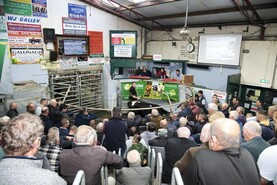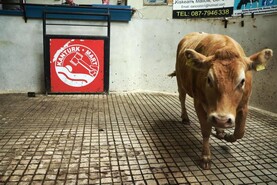Despite the value of JBS Beef North America sales increasing by 15% year-on-year to $6.4bn in the first quarter of 2025, the adjusted EBITDA was a loss of $100.5m. EBITDA is the common measurement used in reporting company profitability, representing the profit before interest, taxation depreciation and amortisation are included.
JBS beef North America has nine factory locations in the US and one in Canada. The negative result for Quarter 1 2025 reflects the shortage of cattle for processing in the US with the herd at its lowest point since the middle of the last century. Cattle prices are also at a record high, with USDA reporting that last week the factory kill was down 57,000 head compared with the same week last year and the price was the equivalent of €7/kg for steers.
JBS is headquartered in Brazil and is the world’s largest meat processor. The group net revenue for Quarter 1 2025 was $19.526bn (€17.4bn) with an adjusted EBITDA of $1.527bn (€1.36bn).
Overall strong result
After the North American beef business, the next largest division of JBS is Pilgrim's Pride. This is the global poultry processing business and includes Moy Park, which is now fully rebranded as part of Pilgrim's Pride. It had a turnover of $4.5bn (€4bn) in the first three months of 2025 with an adjusted EBITDA of $660m (€589m). JBS Brazil returned net revenue of $3.2bn (€2.85bn) with an EBITDA of $131m (€117m), while the US pork division had a revenue of just over $2bn (€1.78m) and an adjusted EBITDA of $247.3m (€220m). Seara is their food processing division and it posted revenue of $2.150bn (€1.92bn) with an adjusted EBITDA of $425.7m (€300m) while JBS Australia had revenue of $1.621bn (€1.45bn) with EBITDA at 160.4m (€146.8m).
Comment – beef is low margin
JBS is a well-diversified business both geographically and in product mix. This is the strength of the business in what is presently a difficult time for beef processing in the US as was also reflected in the recent Tyson accounts for the first quarter of 2025. While beef processing in Brazil and Australia has a positive margin, helped by lower cattle price, it is the poultry, pork and processed food businesses that are returning the best margin at present.
Their difficulty with beef in the US is the shortage of cattle for processing and difficulty in passing high cattle prices on to their beef sales.
Irish cattle prices have jumped ahead of US prices in recent months. We don’t have access to quarterly financial information for Irish beef processors but they have a major advantage not available to their US counterparts. That is that half of all Irish beef exports are sold in the UK where cattle prices have been consistently ahead of Irish cattle prices. That means that even with a higher farm gate price in Ireland, Irish beef is relatively cheap for UK buyers compared with their domestic product.






 This is a subscriber-only article
This is a subscriber-only article










SHARING OPTIONS: